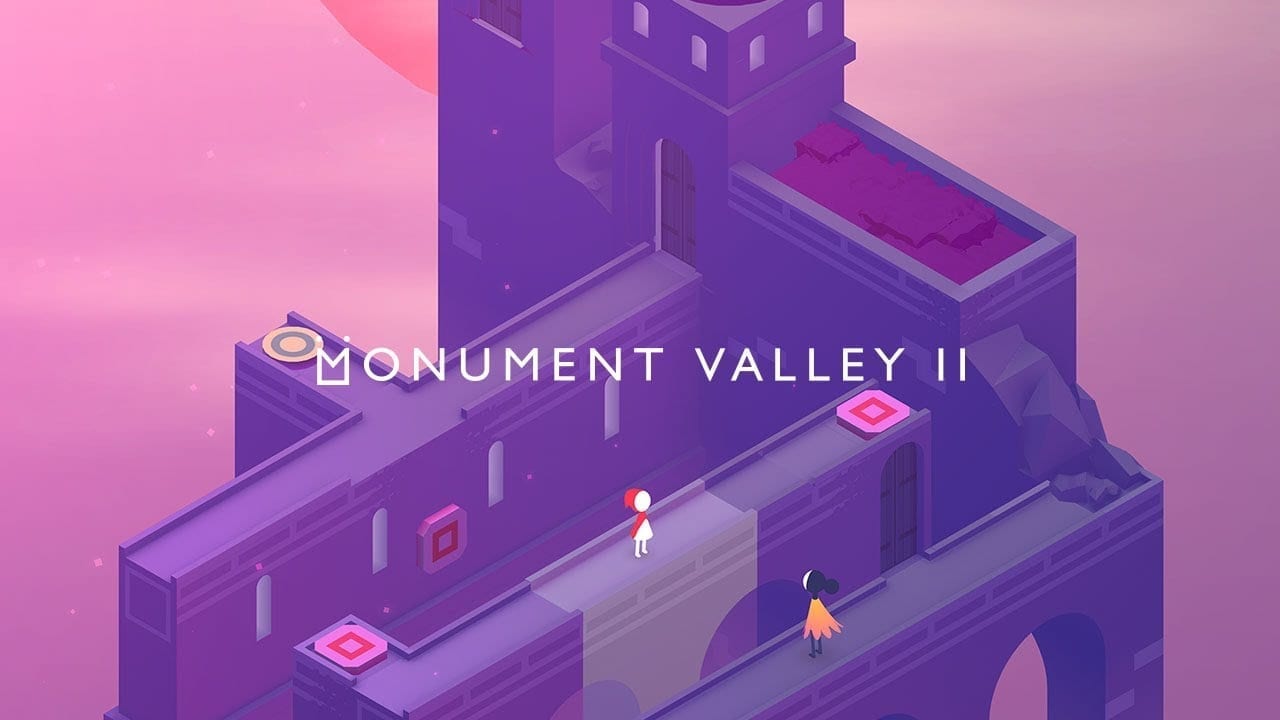Monument Valley was already beloved by the gaming community and a go-to for many gamers, but the team at UsTwo Games wondered if they could make a sequel that was just as good, if not better than the first. (Spoiler: They could and did.)
Monument Valley II allows players to guide a mother and her child on a journey through magical architecture, while deciphering different puzzles. With its sophistication and mesmerizing visuals, the game scored a 2018 Webby Award in Games (Puzzle).
We spoke with the UsTwo Games team on how this game is different from its predecessor, and more.
“ Stories concerning mothers have long been overlooked in gaming and we hoped to change that.”
Monument Valley I is already a staple in the gaming community—what did you and your team want to do differently for Monument Valley II?
With Monument Valley 2, we wanted to build on the world we created in the first Monument Valley game, but deliver a story from a perspective of a character other than princess Ida. We wanted to create a game that felt familiar, but at the same time different. If that makes sense!
What were some of the challenges you encountered in creating a new experience for players? How did you overcome those?
The biggest challenge was trying to create an experience that lived up to the expectations of players who loved Monument Valley! We originally planned for the game to take the form of multiple stories, of which the mother-child arc of Ro and her daughter would be one, with there also being tales of self-acceptance, romance, and friendship. The challenge there was creating a coherent and user-friendly framework in which players could easily keep track of which story they were playing, and at what stage of the story they were.
We overcame this by simplifying what was rapidly becoming a convoluted and confusing system, and playing to our strengths; creating a much more streamlined, focused gaming experience focused on the story of Ro and her child. Since the release of the first Monument Valley game, some members of the team had become parents, so we had a close personal connection to this storyline, and stories concerning mothers have long been overlooked in gaming and we hoped to change that.
Monument Valley is inarguably a beautiful and well-designed game. Can you talk about what went into concepting and designing such a visually pleasing game?
With both Monument Valley games, we looked beyond games for visual inspiration. Architecture, memories of childhood holidays to foreign countries, movie posters, RuPaul’s drag race, and sweets are but a few things we have drawn inspiration from to create the visual style of the game. For both Monument Valley 1 and 2, one of our aims was that each chapter should not only work as a playable level, but also look good enough for someone to want to print it out and hang it on a wall. We printed out loads of reference pictures and stuck them to foam boards with inspiration for the levels that we could carry around with us when we hot desk, and it’s all these different ingredients which help to make a game with the visual style that Monument Valley 2 has.
In Monument Valley, players guide a silent princess named Ida through obstacles. Why did your team design to make her silent?
One of our design principles behind Monument Valley was to create a game that anyone could engage with, and part of that was for us to not force our own ideas onto our players. Ida is silent, and also faceless, to allow players the freedom to interpret the events of the game how they like, and come away with their own meaning.
What does your Webby win mean for you and your work?
Winning a Webby has been a big deal for us! The Webbys, being an internationally-known award show helps elevate the image and perception of gaming as an art form, something we are very passionate about. Games are quite often shown in derogatory ways in mainstream media, and we hope that through the recognition of organisations such as The Webbys, we can help improve the image of games and the games industry.













